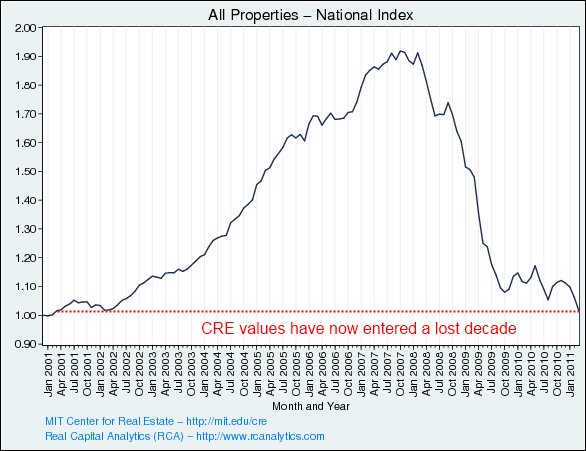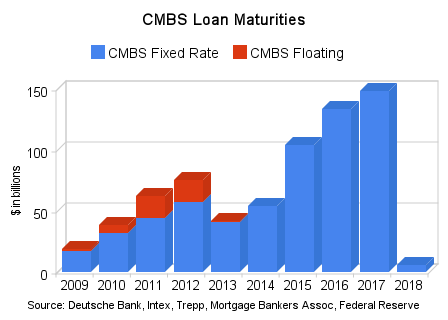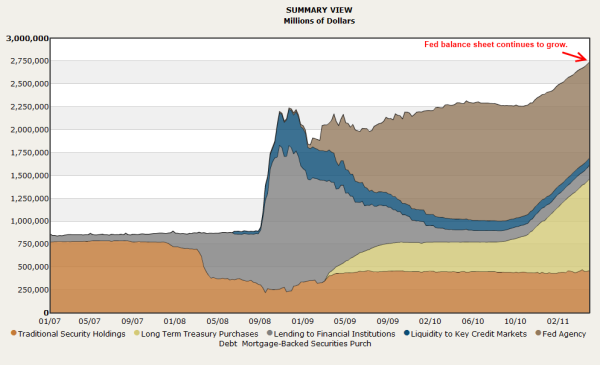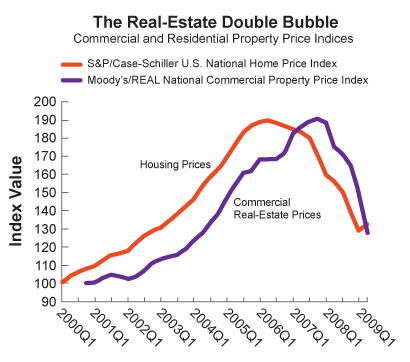Stealing from Americans via strip malls and raw land – Commercial real estate reaches a new post-bubble low. A lost decade in commercial real estate values.
- 1 Comment
The commercial real estate (CRE) bubble is popping with dire consequences. It is not uncommon for people to be in the complete dark when it comes to CRE. Just ask a friend or family member what they know about the CRE market. The mainstream media has absolutely failed to report on this $3 trillion market which has caused hundreds of banks to fail. The Federal Reserve has purposely hidden assets backed by commercial real estate deep in the underbelly of its balance sheet trying to protect the banking system from facing reality. In short the Fed has initiated a shadow bailout of the banking system, every wart and scar included, without even running it by the U.S. taxpayer. Keep in mind that the Fed balance sheet has empty shopping malls, run down motels, and other items including luxury hotels. This correction in CRE has been going on for a few years so it should come as no surprise to you that CRE values are now at a post-bubble burst low.
CRE values at new record low
Source:Â MIT
Following its brother in the residential real estate market the double-dip is in full bloom for CRE. CRE values are plummeting through the linoleum floor. How bad is it getting? How about getting an 83 percent haircut:
“(Vegas Inc) Since the peak of the market in the fourth quarter of 2007, land prices have fallen by 83.3 outside the resort corridor, the firm reported.
Applied Analysis Principal Brian Gordon said the oversupply on the market in all real estate sectors continues to put downward pressure on new construction and ultimately the need for land.
High vacancy rates in commercial properties and limited residential construction are expected to limit the demand for land.â€
Demand for many commercial real estate deals have all but gone away like balloon boy. Reality is sinking in that in many areas there is no redemption for some CRE properties. Like Florida swampland in the 1920s there is little that can be done about some of these failed deals. Yet the Federal Reserve has allowed banks to unload toxic CRE into their balance sheet as a containment center. What good does this do for the overall economy? If anything, it only quarantines horrific debt for the banks but does very little for the average American who is sinking in debt and struggling to hold onto whatever semblance of the middle class that is left over. These CRE deals were entered into with open eyes by speculators and banks made these loans expecting solid returns. Now that the deals have gone bust they are passing the responsibility onto the American taxpayer. We are talking about a $3 trillion market here.
CRE worst years ahead
Source:Â Â Â Â Â CRE Console
This may be hard to believe but the worst years for commercial real estate are down the road. Unlike residential real estate with rather long-term maturities of 15 and 30 years CRE debt is typically refinanced in short-terms of 5, 7, or even the rather atypical 10 years. What this means is that most of the bets made at the peak in 2006 and 2007 are coming home to roost only now. These problems are sending quakes throughout the banking industry. Banks are trying to do everything they can to unload this bad debt and many are simply exchanging these CRE deals for U.S. Treasuries through the Federal Reserve:
The above chart really said everything to me about the recent supposed recovery. It was all one giant mirage because if things were really getting much better don’t you think the Fed would have started unloading some of this property back to the banks? Yet as the Las Vegas example showed, the mark-to-market values of some of these deals may be 80 percent below book value. In other words the entire industry is insolvent.
Double bubbles
Source:Â Â The American
Unfortunately we have become a land of bubbles. The Federal Reserve is doing everything it can to inflate its way out of this quagmire. Yet it is trying to proceed in a way where the too big to fail are treated in a silo with preferential treatment and the rest of the country is treated in the brutal free market correction system. One of the main tenets of our country revolves on the ability to fail. We realize that many people can start a business and fail if necessary. But you can always come back. Yet more and more the majority of Americans are being put into a serfdom of debt. Take for example student loans. Why do we allow most every other form of debt to be discharged in bankruptcy except student loans? This is preposterous and has allowed banks to juice the system and put many people into debt servitude. Some will argue that students signed on a dotted line. Does a 17 or 18 year old really understand the magnitude of $50,000 in student loan debt? Probably not and that is where banks need to exercise fiduciary responsibility. If they don’t then a student has the option at some point to file for bankruptcy and the bank eats the loss. Banks deserve to do their job since the majority of student loans are backed by the government.
Now how does this tie in with commercial real estate debt? As you can see above the banking system has a perfect way out of this mess. Their absurd bets on raw land and dubious hotel deals is simply a phone call away with the Federal Reserve. They get multiple get out of jail free cards and simply transfer the risk to the taxpayer. The system is flawed in so many ways at this point. This is why the middle class is disappearing while banks continue to gouge the public. It should be clear where the majority of the problem exists in this financial fiasco. Here we are four years into the crisis and not one serious trial for one of the too big to fail. Given the distractions being served up by the mainstream media and political machine Americans will be fed gossip gruel while their financial future is whisked away by the banking system.
If you enjoyed this post click here to subscribe to a complete feed and stay up to date with today’s challenging market!1 Comments on this post
Trackbacks
-
Jon said:
I enjoy your website… excellent work!
So I have seen the Fed Balance Sheet chart before and it is astounding. I have one question, if anyone knows: The ‘Fed Agency Debt Mortgage-Backed Purchases;’ are those Fannies and Freddies, or does this catagory include bank owned mortgages?
June 13th, 2011 at 2:22 pm





 If you enjoyed this post click here to subscribe to a complete feed and stay up to date with today’s challenging market!
If you enjoyed this post click here to subscribe to a complete feed and stay up to date with today’s challenging market!